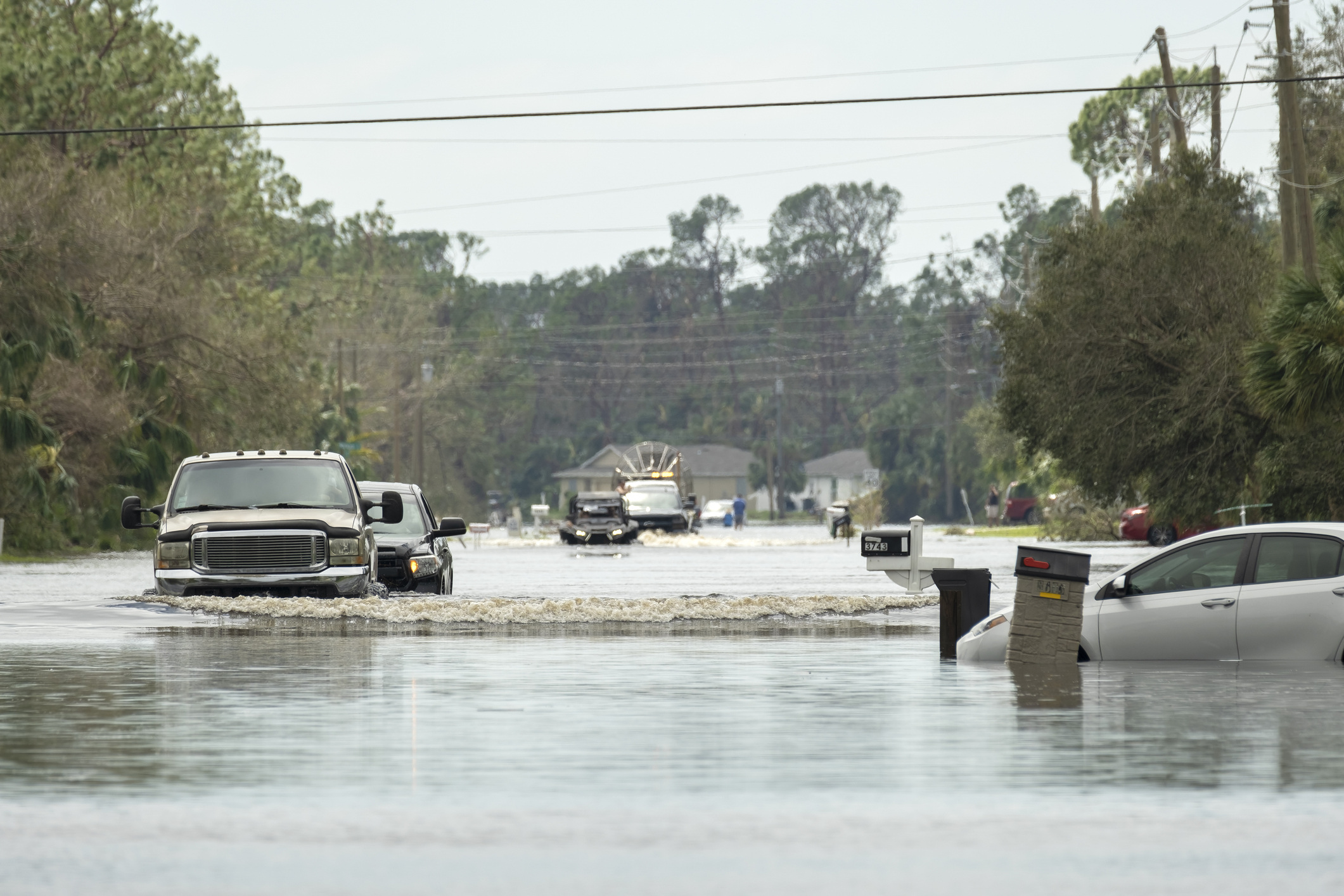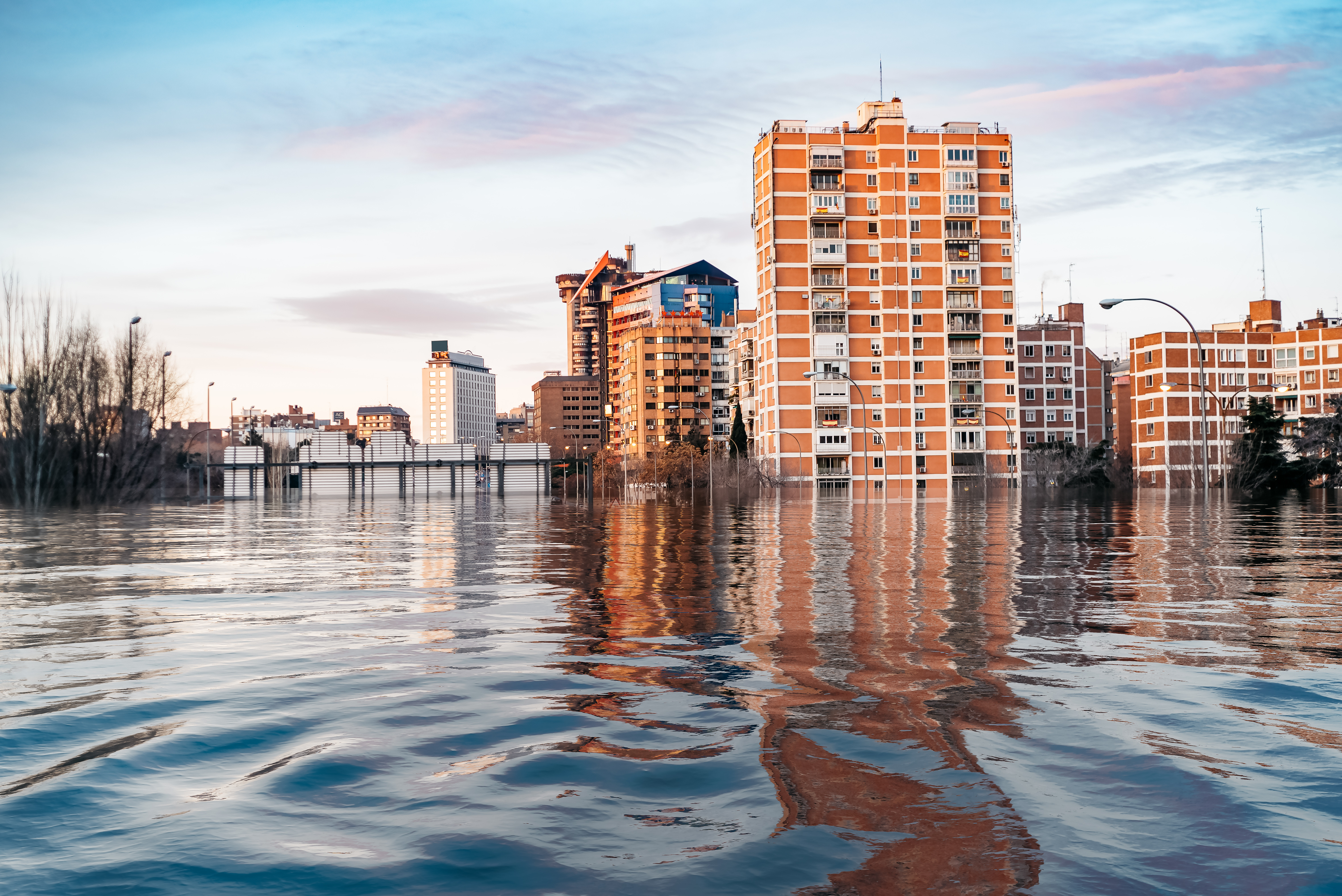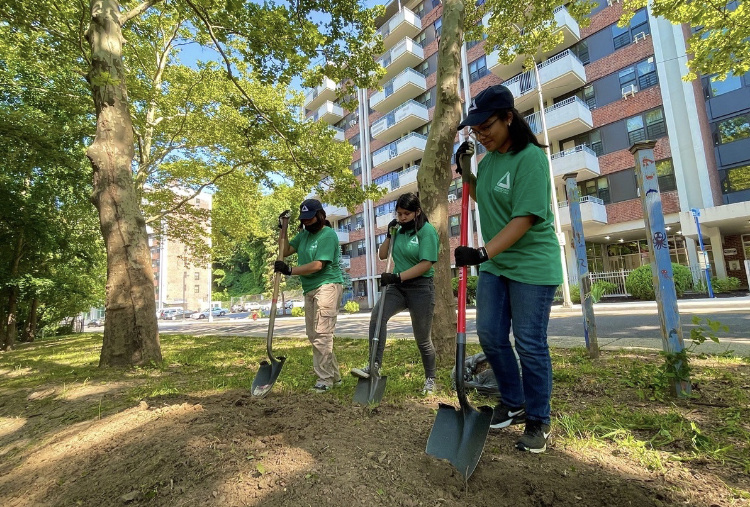A flood is defined as a condition where two or more acres of normally dry land or two or more properties are inundated by water or mudflow. Floods are among the most common and deadliest natural disasters in the United States and affect every region of the country, causing severe property damage each year. Just an inch of floodwater can cause as much as $25,000 in damage, according to FEMA.
Floods are one of the leading causes of weather-related fatalities in the nation, according to the National Weather Service (NWS). Floods cause an average of 81 deaths per year, second only to extreme heat (130 deaths per year).
Know your flood risk

Flood risk is based on several factors, including weather patterns, natural changes in the environment, and recent development in the community.
Factors can include, but aren’t limited to:
-
Heavy rainfall
-
Dam and levee failures
-
Tidal storm surges
-
Snowmelt and spring thaws
-
Wildfires
-
New construction
To help property owners and communities understand their flood risk, the Federal Emergency Management Agency (FEMA) maintains flood maps to determine various risk levels through identified flood zones. These zones include:
-
High-risk areas: Properties within these areas have a 26% chance of flooding over 30 years. Property owners with a federally backed mortgage are required to purchase flood insurance. These areas are shown on a flood map as zones beginning with the letters A or V.
-
Moderate-to-low risk areas: The risk of flooding in these areas is reduced but not completely removed. One in three insurance claims come from moderate to low-risk flood zones, according to FEMA. Flood insurance is recommended but not required for properties in this zone. These areas are shown on a flood map as zones beginning with the letters B, C, X, or shaded X.
-
Undetermined risk areas: These areas have the possibility of flooding, but the risk is either undetermined or has not been previously studied. These areas are shown on a flood map as zones beginning with the letter D.
FEMA works with municipalities to create and continually update flood maps. You can access maps through FEMA’s Flood Map Service Center. It’s important to note that a building can sometimes experience flood damage, even if it’s not located within a defined high-risk flood area.
Flood preparation

Floods can develop slowly, or in the case of flash floods, in mere minutes without warning. Preparation can help protect lives and prevent costly flood damage.
-
Refer to your business continuity plan to identify vital operations for your organization. Calculate a response with multiple options, carefully considering potential impacts on critical services.
-
Stay in touch with regional response organizations. Examples include local building and public safety officials, state organizations, nonprofits, charities, and federal agencies like FEMA.
-
Know if your property is located in a flood zone, and evaluate your flood risk.
-
To avoid excessive water intrusion, ensure your property’s grading directs water away from the building and not toward the building.
-
Keep sandbags on hand to help divert water away from the foundation of your building.
-
Protect the HVAC system and other equipment installed in your building by elevating them above the flood levels.
-
Hire a licensed electrician to raise electrical components (switches, sockets, circuit breakers, and wiring) above the base flood elevation for your area. This will help prevent damage to the electrical system and avoid the potential fire risk from short circuits.
-
Inspect drains and sump pumps regularly to ensure proper operation.
-
Consult with a licensed electrician to provide a transfer switch to your sump pump so it will remain operable in the event of flooding.
-
To prevent sewage backup, have a licensed plumber install a backflow prevention valve.
-
In snowy regions, mark all drains to ensure they’re unblocked during snow removal procedures.
-
Collect emergency building and survival materials such as sandbags, shovels, medications, battery-operated radios, and insurance documents. Keep an adequate supply of safe water available—floodwater is often contaminated and unsafe to use and consume after a flood.
-
Plan and practice an evacuation route.
-
Ensure all necessary employees know how to shut off utilities during an emergency.
During a flood
Conditions can change rapidly during a flood. Stay informed and be prepared to evacuate residents and staff immediately.
-
Stay up-to-date using social media, local news, and radio broadcasts.
-
Evacuate when instructed to do so, and shut off all necessary utilities if possible.
-
Move to higher ground and avoid rising waters. Never walk or drive through floodwaters. Just 6 inches of moving water can knock a person off their feet. Water may also be deeper than it appears and can hide hazards. Just 12-18 inches of moving water can sweep away a large vehicle.
-
Watch out for downed power lines and electrical wires. Don’t enter any room where water covers electrical outlets or cords are submerged. If there’s any chance water may have electricity in it, get out immediately.
After a flood
Hidden dangers such as gas leaks, contaminated sewage, and fallen power lines can linger long after floodwaters recede.
-
Continue to stay informed about the latest conditions.
-
Return to your property only when authorities say it’s safe to do so. Inspect for damage, and report it as soon as possible.
-
Remove standing water as quickly as possible. To prevent mold growth, dry or remove soaked carpets, padding, and upholstery within 24-48 hours. Thoroughly dry out the interior of the building.
-
Wash and disinfect all areas that have been flooded to remove any potential bacteria and other contaminants.
-
Contact a licensed electrician to inspect any electrical equipment that may have been damaged during the flood.
-
Be aware of animals that may have sought refuge from floodwaters on the upper levels of the building, and contact your local animal control office if necessary.
Beware of contaminated floodwater
-jpg.jpeg?width=2194&height=1463&name=GettyImages-1338165435%20(1)-jpg.jpeg)
Floodwater often contains infectious organisms and bacteria and can cause nausea, vomiting, diarrhea, muscle aches, and fever.
Depending on the location, floodwaters may also be contaminated by agricultural or industrial chemicals or hazardous agents. Standing water can become a breeding ground for mosquitoes carrying various diseases.
Employees and contractors handling flood cleanup must exercise caution in these situations. It’s best to consider all floodwater contaminated until local authorities indicate that the public water supply is safe.
Have questions about flood risk and insurance coverage?
This article is for general information only. HAI Group makes no representation or warranty about the accuracy or applicability of this information for any particular use or circumstance. Your use of this information is at your own discretion and risk. HAI Group and any author or contributor identified herein assume no responsibility for your use of this information. You should consult with your attorney or subject matter advisor before adopting any risk management strategy or policy.






